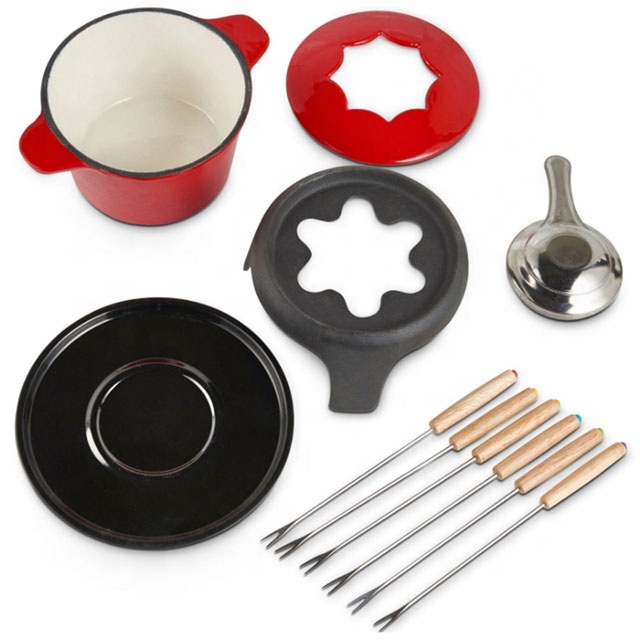
Best Practices for Cleaning and Maintaining Your Cast Iron Cookware
The Art of Washing Cast Iron Pans A Comprehensive Guide
Cast iron pans are celebrated for their excellent heat retention and even cooking capabilities, making them a favorite among both amateur and professional chefs. However, the care and maintenance of these sturdy kitchen staples can be a bit daunting for newcomers. One of the most contentious issues surrounding cast iron cookware is how to properly wash and maintain these pans to keep them in optimal condition. In this article, we will explore the best practices for washing cast iron pans to ensure their longevity and performance.
Understanding the Unique Characteristics of Cast Iron
Before diving into the cleaning process, it’s important to understand why cast iron requires a different approach compared to other cookware materials. Cast iron is porous, which means it can absorb flavors and liquids. This quality allows cast iron to develop a natural seasoning, enhancing the flavor of dishes over time. However, this also means that improper cleaning methods can strip the pan of its seasoning, leading to rust and a diminished cooking surface.
Washing Your Cast Iron Pan Step-by-Step
1. Let It Cool After cooking, let your cast iron pan cool down gradually. Avoid putting a hot pan under cold water, as this can cause warping or cracking. Allow it to reach a safe handling temperature before cleaning.
2. Use Hot Water and a Scraper For most everyday tasks, a simple rinse with hot water will suffice. Use a small amount of dish soap if desired, but it's generally unnecessary for well-seasoned pans. If there is stuck-on food, a non-metal brush or a scraper specifically designed for cast iron can help dislodge any remnants without damaging the seasoning.
3. Avoid Soaking Never soak a cast iron pan in water. Prolonged exposure to moisture can lead to rust formation. Quick rinsing is the best approach to preserve the integrity of the pan.
washing cast iron pan

4. Dry Thoroughly After washing, it’s crucial to dry your cast iron pan thoroughly. Use a lint-free cloth or paper towel to wipe off any moisture. For added precaution, place the pan on low heat on the stove for a few minutes to ensure all water has evaporated.
5. Reapply Seasoning (If Necessary) If you notice any signs of dullness or bare spots in the seasoning, it’s a good idea to reapply a thin layer of cooking oil. This replenishes the oil that may have been stripped away during cleaning. Using a neutral oil like vegetable or canola oil works best. Heat the pan over medium heat for a few minutes to allow the oil to penetrate the surface.
Additional Tips for Care and Maintenance
- Avoid Harsh Chemicals Steer clear of bleach and abrasive cleaners, as they can damage the pan’s seasoning. - Store Properly To prevent moisture buildup, store your pan in a dry place. You can place a paper towel inside the pan to absorb any residual moisture.
- Regular Use The more often you use your cast iron pan, the better seasoned it becomes. Frequent cooking helps maintain its non-stick surface and flavor-enhancing properties.
- Addressing Rust If your cast iron pan does happen to rust, do not despair. You can remove the rust with some steel wool, then wash, dry, and reseason it as detailed above.
Conclusion
Washing and caring for a cast iron pan may seem tricky at first, but with a little practice and attention, it can become an intuitive process. Proper washing techniques not only preserve your pan’s seasoning but also enhance its longevity and performance. With these tips, you can enjoy the countless benefits that come from cooking with cast iron for years to come. Remember, a well-loved and well-cared-for cast iron pan is a cherished companion in any kitchen, ready to help you create delicious meals with rich flavors for your family and friends. Happy cooking!
-
Season Cast Iron Perfectly with GPT-4 Turbo TipsNewsAug.01,2025
-
High Quality Cast Iron Cookware - Baixiang County Zhongda MachineryNewsAug.01,2025
-
Premium Cast Iron Pan: Durable & Perfect HeatNewsAug.01,2025
-
High Quality Kitchen Durable Black Round Cast Iron Cookware Pancake Crepe Pan-Baixiang County Zhongda Machinery Manufacturing Co., Ltd.NewsAug.01,2025
-
Cast Iron Cookware - Baixiang County Zhongda Machinery | Nonstick, Heat ResistanceNewsAug.01,2025
-
High Quality Kitchen Durable Black Round Cast Iron Cookware - Baixiang County Zhongda Machinery | Non-Stick, Heat Retention, DurableNewsJul.31,2025


